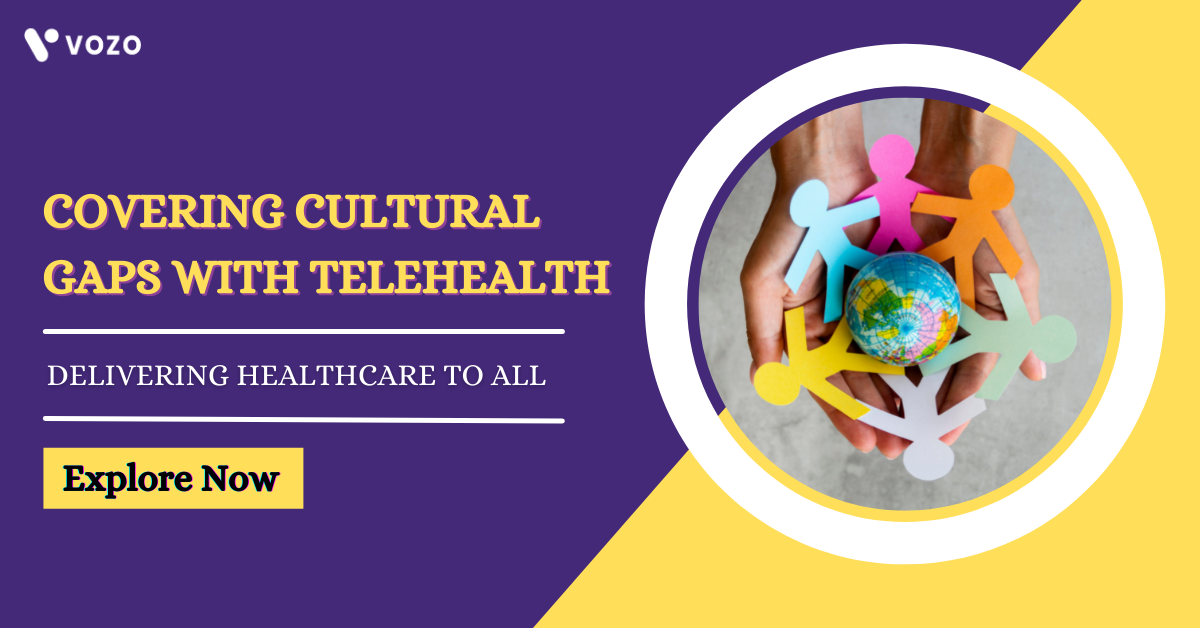Telehealth Bridges Cultural Gaps: Delivering Healthcare To All
As we all know, healthcare these days are very much digitalized. Telehealth bridges the gaps between healthcare providers and patients. The majority of the services are automated so that both the providers and the patients benefit from the use.
While telehealth services open many ways of access to healthcare delivery, one of the most performative effects of telehealth is that it is available to all irrespective of their cultural backgrounds. People are open to receiving and choosing delivery according to their cultural values.
The cultural gap is one of the major drawbacks in reality when it comes to healthcare. Many people are unable to reach or unwilling to reach healthcare due to their linguistic barriers.
These days to cement this problem, facilities that previously had limited their access to translators, and other providers who have that particular knowledge about particular cultures are now preferred more.
They can now expand their team or panels to include providers who can fill the gaps which keep the patients away from getting quality care. They are hired/appointed even if they are located in a different place because of telehealth. This way every facility/clinic can ensure delivering care to all irrespective of their language, culture, and geographical factors.
RELATED: How Telehealth Is Improving Continuity Of Care Today?
What Matters The Most? Cultural Backgrounds
We do agree that the medical diagnosis and the treatments may be the same for many people, but treating them effectively has been a problem due to the language barriers. Patients feel comfortable with doctors who can understand their culture and speak their language.
Only when they are comfortable, they can communicate and let the physician know about their problems and conditions. Only then better decisions regarding the treatments and other services can be done.
In the past, many large organizations used the help of translators to solve this issue, but in time even the large number of translators were not sufficient to manage the gaps between cultural differences and achieve good physician trust.
This drawback can hinder patient satisfaction and the delivery of quality care.
Placing a translator between a doctor and a patient can draw the attention of the patient from the doctor. This leads to unattentiveness in the session. The provider also may not completely understand what the patient is trying to say and their behavior even with the presence of a translator.
This can impact both the provider and the patient.
Communication Hindrance
Family members of the patient may be used as a replacement by small healthcare facilities which may not be able to use mediators like translators. Every patient has the right to privacy. They might not have it in the presence of even their family.
Confidentiality cannot be maintained with the provider in this case. The patients cannot communicate with them with confidence and openly in the presence of family.
Telehealth To The Rescue
Telehealth uses telemedicine services to identify providers who may suit their particular patient population by practices and facilities. It helps them to connect with those patients regardless of their geographical location.
Telemedicine enables facilities/organizations to work with those particular providers who can bridge certain dialects and the providers who have prior experience in specific ethnic backgrounds.
Even though translators possess an important place in the industry, the ability to connect multilinguistic providers in one platform increases care outcomes, treatment outcomes by improving patient satisfaction and comfort level.
RELATED: Telemedicine’s Cost And Quality: Can Balance Be Achieved?
Connecting Patient With The Appropriate Providers
Many healthcare agencies and service organizations have reported that telemedicine and patient portals have enabled them in connecting or matching patients with the exact providers they were preferring for.
Many positive outcomes were noted from the side of patients who consulted doctors who were able to provide good service and also at the same time, met with their cultural needs.
When doing some research, many studies say that the identification of a patient’s chosen language, age as well as cultural needs, can result in better treatment compliance and outcomes.
Providing Healthcare To All
Geographical and cultural barriers can be easily removed with one solution – telehealth. Remote services using patient portals, telemedicine, etc, can create communication between patients and preferred providers irrespective of the location.
The confidentiality, easiness, and clarity which were hindered while using a translator can be regained with telehealth. Telehealth allows the patients to appreciate those variations in communication.
Vozo provides such a sophisticated and well-groomed telehealth platform to your practice. Use our telehealth solutions to deliver care remotely. Explore to know more about the services provided by us to make your practice the top player in the field.
“Let’s make your practice function without any barriers, together”
About the author

With more than 4 years of experience in the dynamic healthcare technology landscape, Sid specializes in crafting compelling content on topics including EHR/EMR, patient portals, healthcare automation, remote patient monitoring, and health information exchange. His expertise lies in translating cutting-edge innovations and intricate topics into engaging narratives that resonate with diverse audiences.













